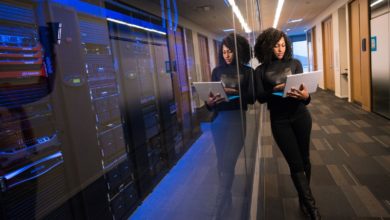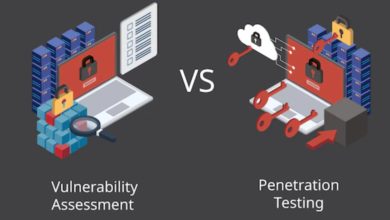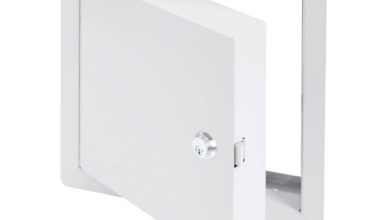Access Control Trends To Watch In 2024
Access control is a vital component of physical and cyber security, enabling organizations to manage which personnel can access critical infrastructure and sensitive data.
In the past decade, smartphones have introduced new security methods to make it much easier to implement access control.
Smartphones can now give us access to commercial buildings and offices even if our devices are simply in our back pocket. Businesses and corporations are using access systems to manage their commercial security risk while making their spaces more accessible to employees and visitors.
Along with mobile access control, businesses are looking to increase other access control methods that regulate who enters and leaves a building more accessible. That said, here are the biggest access control trends to watch in 2024
Mobile Access Control
Our mobile phones contain our whole lives on them. Therefore it’s no surprise that they can now open doors for us as well. Almost everyone is likely to have a mobile phone with them throughout the day, and for most people, they are a much more important thing to remember, unlike a critical card.
Most mobile access control systems operate using an app that provides access through a door. Now more than ever, everyone always has their mobile phones to hand, and these smartphones are the key to simple, hands-free access control.
In most cases, mobile access control is powered by Bluetooth, with Bluetooth Low Energy (BLE) technology removing the need to pair devices manually. Mobile access control also works with tablets and wearable electronic devices, which many employers are beginning to adopt to control access to office spaces or communal buildings.
The use of this easy app-based access control provides extra security to businesses and organizations and ensures that employees are as safe as possible. Many businesses are encouraging this access control method as we head into 2024.
Our mobile phones are an excellent access tool for emails that require passwords and a unique ID. Cyber security and access control come hand in hand; users have to confirm their cyber identity before being granted access to their personal information.
Using weak cyber security methods can increase the risk of viruses and make you more vulnerable to hacking.
Touchless Access Control
Thanks to touchless access control, you can now unlock a door or entrance just by waving your hand in front of the touchless reader. With ongoing concerns over COVID-19, this access control method provides a simple solution to improving hygiene by reducing potential points of contact where the virus could otherwise spread.
Touchless access control and automatic door opening systems are becoming increasingly popular, prioritizing the health and safety of all staff members and visitors when it comes to entering a workplace or communal building.
‘Wave to unlock’ is the best step forward when it comes to contact-free entry. Not only does it provide quick and easy access to buildings, but it also has many hygienic benefits through the contact-free entry system.
The hands-free entry system requires no contact and relies solely on Bluetooth recognition. As long as you have your mobile phone on you, you can enter a building without using your hands — wave your hand in front of the reader to unlock the door.
This method of entry aims to give people fast and reliable access, keeping people moving quickly through doorways and lobbies to reduce the risk of crowds or limited social distancing.
Now that most companies have adapted to a hybrid workplace, these touchless and keyless access methods will be sticking around as they support a contact-free approach to getting in and out of buildings.
In addition to keeping access hygienic, a commercial door lock entry system can also track who’s coming and going and which doors are being unlocked, offering a much higher level of security.
Multi-factor Authentication
This access control system is widely popular for cybersecurity, requiring you to prove your identity using a smartphone or other personal device to allow access. Your identity can be provided in many forms, usually through face identification, a fingerprint, or a password.
In most instances, multi-factor authentication works by requesting a PIN sent via SMS to a trusted personal device to verify the user’s identity. Analyst company Gartner predicted that 50% of mobile authentication businesses would adopt it as their primary verification method by the end of 2019.
Multi-factor authentication (MFA) is essentially the mixing of digital identity with your physical identity. Although MFA has been around for many years now, the applications of this access control method continue to expand as new security technologies develop.
Multi-factor authentication is perhaps one of the most secure means of access. Although it may take longer, with more steps to provide user access, it is much more secure than single-factor authentication. Employees commonly use multi-factor authentication to securely access personal and private information such as online transactions and emails.
MFA is one of the most effective ways to protect your systems from data breaches by providing secure access control. While it’s already in use across many companies, MFA adoption will likely expand even further in 2024.
Video surveillance can combine with access control methods to guarantee further authentication. This option uses CCTV to record employees and their access key cards when entering a building. Video analytics can then determine whether the person entering the building matches the employee on the card.
Summing Up
All of these access control methods are highly beneficial for security purposes. In the coming years, offices, factories, museums, stadiums, and many other public facilities open their doors to welcome back visitors and employees after the COVID-19 pandemic.
The expanding use of access control is likely to lead to further innovations in the future by providing new ways to improve security and accessibility. These access control trends can act as long-term solutions after buildings and offices have remained empty for the past year while putting employees’ minds at ease, knowing that their safety is the top priority.
Main Photo by Mauro Sbicego on Unsplash





